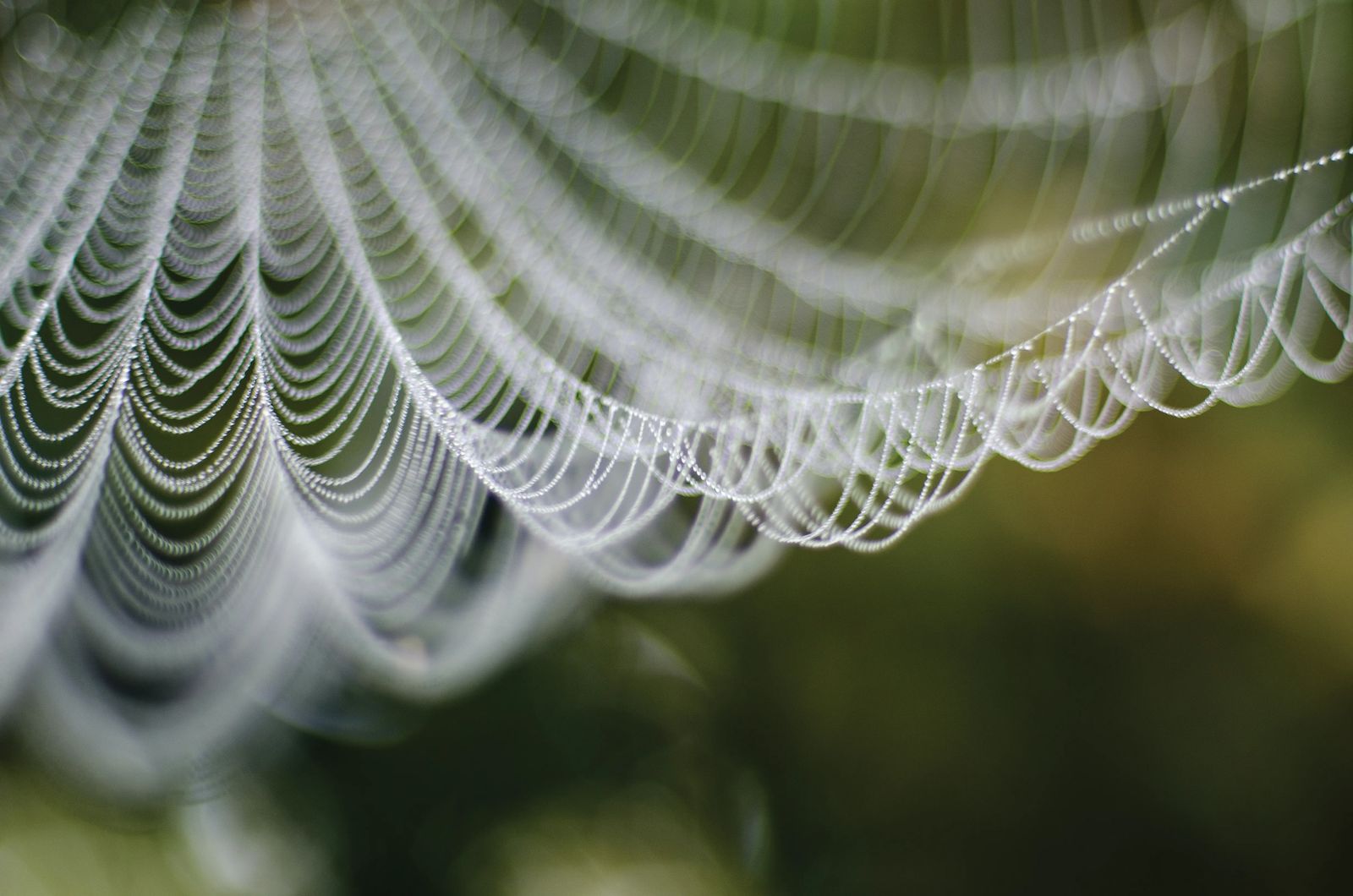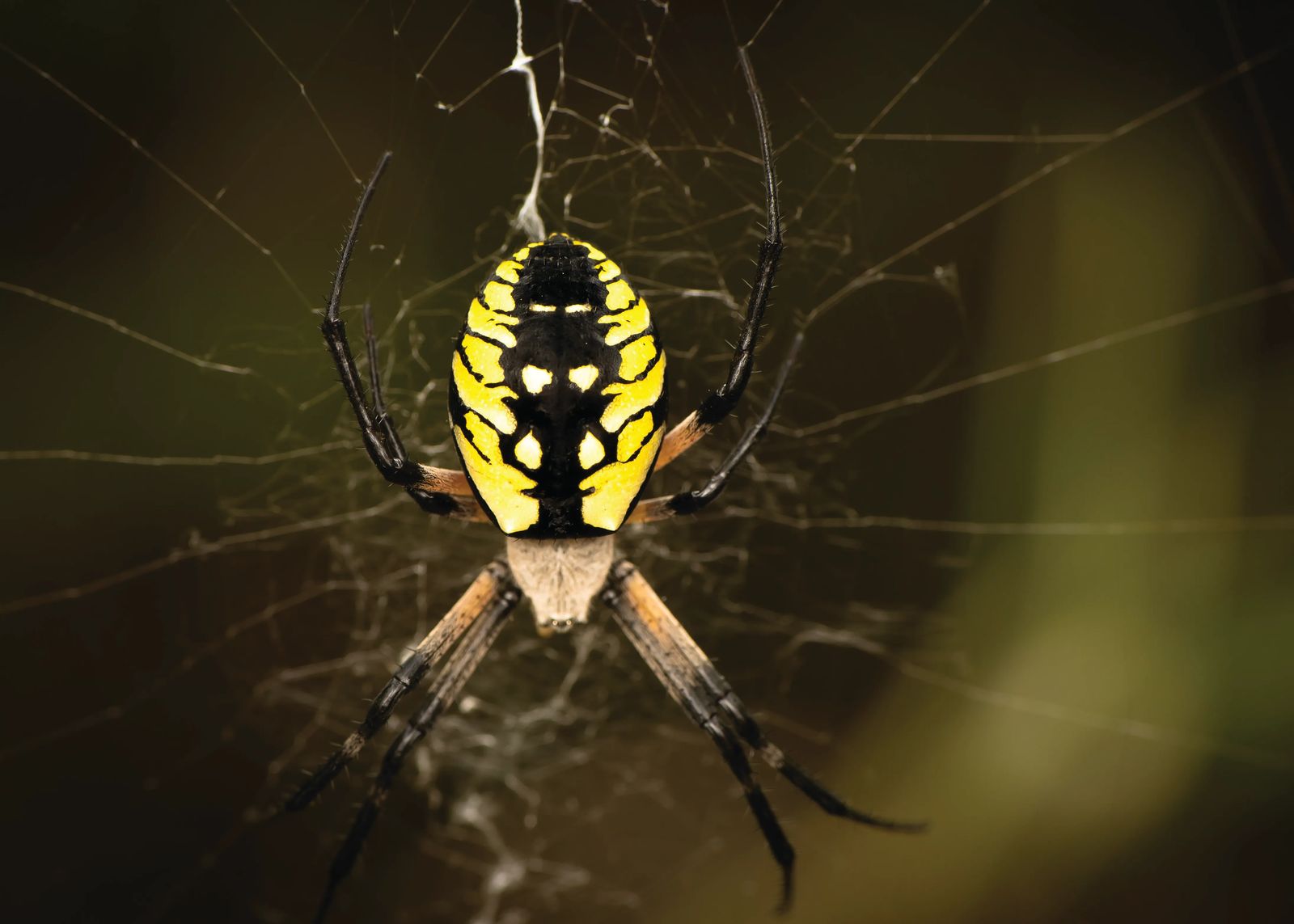
Taking the Creepy Out of the Crawlies
October 2020 | by stephanie hobby | photos by marian lyman kirst
They’re just about everywhere right now. Spider webs and their eight-legged creators are suspended from ceilings, strung across porches, and displayed in window corners, and those are just the Halloween decorations! Around this time of year, spiders start making their often unwelcome appearance inside as the weather turns cooler. But before you reach for the shoe, it’s important to know how beneficial these animals are. And if you’re in Montana, chances are really, really good that your houseguest won’t be harmful and will more than earn their keep. (But it’s understandable if you prefer that it move back outside.)
Local entomologist, spider enthusiast, and insect photographer Marian Lyman Kirst grew up on the Rims and says she has a lot of empathy for people who are naturally afraid of spiders. At her parents' insistence during her childhood, she gradually became comfortable enough to handle them, and today, she is teaching her children the value of arachnids and sharing her enthusiasm at the Montana Audubon Center where she volunteers.
"It's kind of been my mission to correct misinformation about spiders here. We're so lucky because we have great access to a host of interesting spiders and very few that could be dangerous," Lyman Kirst said. "And yet so many bites and skin problems are assumed to be the result of a spider bite and creates a whole culture against spiders. It just feels so unjust. They're such wonderful animals."
Spiders are essential to a healthy ecosystem as generalist predators, which can keep a broad variety of pest populations down and even reduce the need for pesticides.
“A lot of research has been conducted to show that spiders are present early in the season before a lot of pests reach peak densities, so they’re contributing to the overall decline of pests,” said Dr. Lauren Kerzicnik, Associate Extension Specialist at Montana State University.
Dr. Kerzicnik says spiders are fascinating because they have conquered nearly every territory around the world - one even builds webs underwater - but stresses that Montanans have a very low risk of being hurt by a spider. She says the only potentially dangerous spider is the black widow, which is very reclusive and can't move quickly outside its web. The brown recluse is not established in Montana, nor has the spider been positively identified in the state. The hobo spider is present in Montana, but there is currently no scientific evidence to suggest that it is harmful to humans. Spiders typically only bite when threatened or provoked.

Even the large, fuzzy wolf spiders commonly found across Montana can be a lot of fun to watch, even if from a distance. Lyman Kirst laughed while relaying a story about her seven-pound Pomeranian’s encounter with a wolf spider on their deck; when the dog barked, the spider stood up on its hind legs, underbelly exposed, and front legs outstretched, trying to spar with the tiny dog.
Wolf spiders are also good moms; when babies hatch from the sac she carries, they crawl up onto mom’s abdomen to hitch a ride for the first week or so of life until they molt. Then, they release a little bit of silk, catch the wind and fly away to avoid being eaten by a brother or sister.
Other spiders, like the bold jumping spider, which is common in Billings, will interact with people. Jumping spiders have fuzzy eyebrows and mustaches, and two of its eight eyes are huge, making it look like it is wearing sunglasses. “You can put them on your hand, and you’ll turn, and they’ll turn to look at you. They’re very cute, just a great little spider,” Lyman Kirst said.
But perhaps what’s most impressive is spiders’ silk. It’s worth noting that not all species weave webs, but if you ever have the chance to watch a spider at work, it’s well worth the time. Spiders can have up to eight different types of silk glands in their bodies, each designed for a specific task. Whether strong and sturdy for the web's framework, more delicate inner threads for catching prey, or sticky strands used for wrapping prey or building egg sacs.
The silk proteins are stored in a thick liquid within the spider's abdomen, then pulled through a series of spinnerets on the back of the spider, where it is transformed into solid strands and woven into a web.
This silk is incredibly strong, so strong in fact, that some scientists speculate that it could one day offer a lighter weight and more flexible alternative to kevlar bulletproof vests. But there’s a catch.
No one has been able to reproduce it. Spider silk can stretch up to five times its length before breaking, so it’s more stretchy, sticky, and strong than just about anything humans can design. And since spiders are cannibalistic, keeping them in large, silk-producing “farms” is impractical. Researchers think they’re getting closer to mimicking the real thing, but they still haven’t hit quite the right combination of materials.
See? Aren’t spiders great?
“Even though there might be a lot of fear associated with them, they’re not aggressive, and they’re probably more scared of us than we are of them,” said Dr. Kerzicnik.
So put the shoe down, and don’t let those uninvited visitors scare you this month!
Originally printed in the October 2020 issue of Simply Local Magazine
Never miss an issue, check out SLM's digital editions here!





